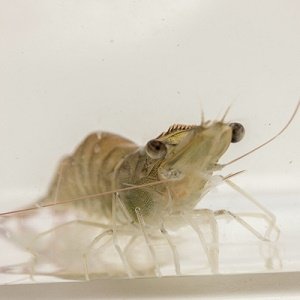
The intensification of aquaculture has been accompanied by a rise in infectious diseases among farmed fish, leading to the frequent use of antibiotics to combat these deadly pathogens. While antibiotics may be necessary to safeguard fish populations, their side effects on fish health and the environment have raised concerns.
Researchers at Galaxidi Marine Farm S.A., the University of Ioannina, the University of Thessaly, the University Research and Innovation Centre “IASON,” and the University of Crete have investigated the effects of oxytetracycline treatment on the intestinal microbiome in intensive sea bass aquaculture.
Antibiotics in Aquaculture
The use of antibiotics in aquaculture has become commonplace to control diseases with high fish mortality rates. However, aside from the evident cost of antibiotic treatment, it has been observed that surviving fish often experience growth impairment. Several studies have reported that antibiotics frequently alter the intestinal microbial community toward suboptimal compositions.
Dysbiosis or dysbacteriosis is defined as changes in the intestinal microbiome, either qualitatively or quantitatively, affecting metabolic processes as well as bacterial concentration proportions or distribution in space.
This raises the question: How does antibiotic use affect the intestinal microbiome of fish, and what are the implications for their long-term health?
Studying the Intestinal Microbiome
In this study, researchers focused on the impact of oxytetracycline (OTC), a widely used antibiotic in aquaculture, on the fish’s intestinal microbiome. Experiments were conducted at a sea bass aquaculture facility in open waters in Galaxidi, Greece. Fish around 10 months old were fed with OTC-containing feed during a treatment period, followed by a withdrawal period, and another treatment cycle.
Revealing Results
16S rRNA gene sequencing was used to measure changes in the fish’s intestinal microbiome. The results were striking: even one month after treatment, the intestinal microbiome community remained highly disturbed and characterized by low alpha diversity.
“As expected, after OTC treatment, the diversity of the intestinal microbiome experienced a significant drop, leading to dysbiosis. There was a significant decrease in Proteobacteria and Gemmatimonas, along with a significant increase in Firmicutes,” the researchers reported.
Stay Always Informed
Join our communities to instantly receive the most important news, reports, and analysis from the aquaculture industry.
Additionally, they noted that “community turnover revealed the extremely delicate balance in the intestinal microbiome that could be disrupted when there was a decrease in diversity, with antagonistic, opportunistic, and pathogenic bacteria replacing bacteria that were beneficial before the treatment disturbance.”
The researchers also observed a significant increase in the presence of alkalophilic bacteria in OTC-treated fish, indicating an increase in intestinal pH. This change in the intestinal environment was associated with a significant increase in the presence of intestinal parasites.
Implications and the Need for Intervention
The findings of this study indicate that OTC treatment leads to persistent dysbiosis even one month after its discontinuation, creating a more conducive environment for parasite proliferation. This raises concerns about the long-term health of aquaculture fish and their ability to withstand diseases.
“In our study, after OTC treatment, there was a significant drop in alpha diversity and the presence of bacteria that require an alkaline environment to grow. Additionally, the appearance of Apicomplexan parasites was recorded,” the researchers concluded.
These findings underscore the need for interventions that help restore a healthy and protective intestinal microbiome in cultured fish. This is not only crucial for fish health but also for the long-term sustainability of the aquaculture industry and the protection of the marine environment.
In summary, understanding how antibiotics affect the fish’s intestinal microbiome is essential for addressing health challenges in aquaculture and promoting more sustainable practices in this vital industry.
The study was funded by the project “Development of research infrastructures for the design, production, and promotion of the quality and safety characteristics of agri-food and bio-functional products (EV-AGRO-NUTRITION)” within the framework of the “Reinforcement of the Research and Innovation Infrastructure” Action, financed by the Operational Programme “Competitiveness, Entrepreneurship, and Innovation,” co-financed by Greece and the European Union (European Regional Development Fund).
Reference (open access)
Rigas, D.; Grivas, N.; Nelli, A.; Gouva, E.; Skoufos, I.; Kormas, K.; Tzora, A.; Lagkouvardos, I. Persistent Dysbiosis, Parasite Rise and Growth Impairment in Aquacultured European Seabass after Oxytetracycline Treatment. Microorganisms 2023, 11, 2302. https://doi.org/10.3390/microorganisms11092302.
Editor at the digital magazine AquaHoy. He holds a degree in Aquaculture Biology from the National University of Santa (UNS) and a Master’s degree in Science and Innovation Management from the Polytechnic University of Valencia, with postgraduate diplomas in Business Innovation and Innovation Management. He possesses extensive experience in the aquaculture and fisheries sector, having led the Fisheries Innovation Unit of the National Program for Innovation in Fisheries and Aquaculture (PNIPA). He has served as a senior consultant in technology watch, an innovation project formulator and advisor, and a lecturer at UNS. He is a member of the Peruvian College of Biologists and was recognized by the World Aquaculture Society (WAS) in 2016 for his contribution to aquaculture.




